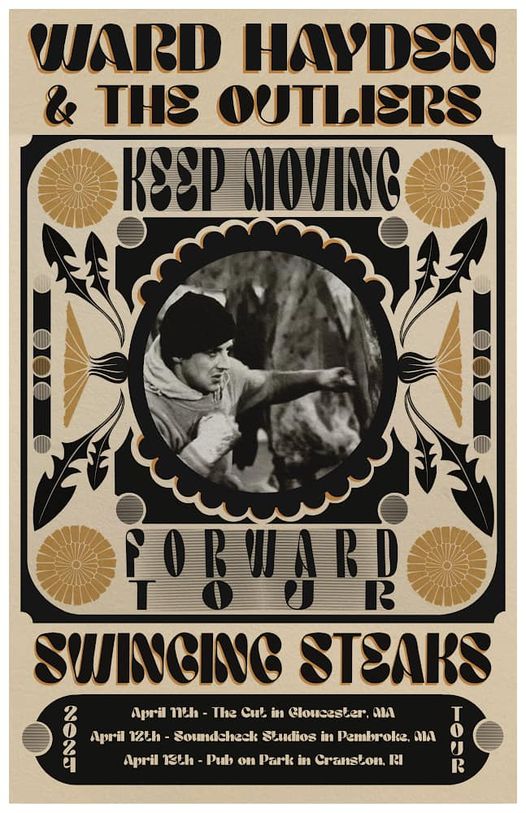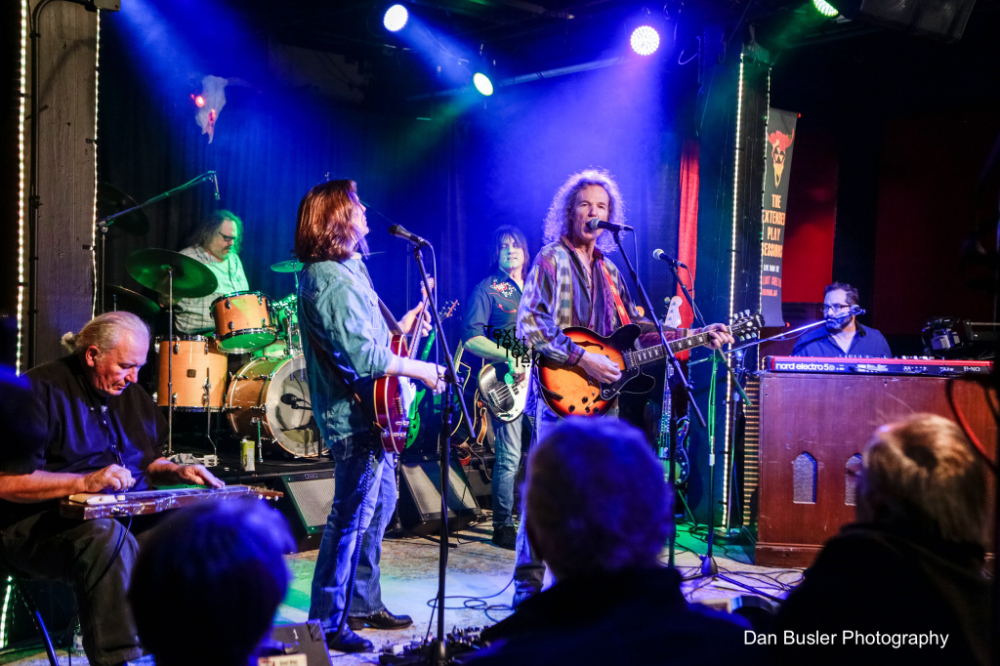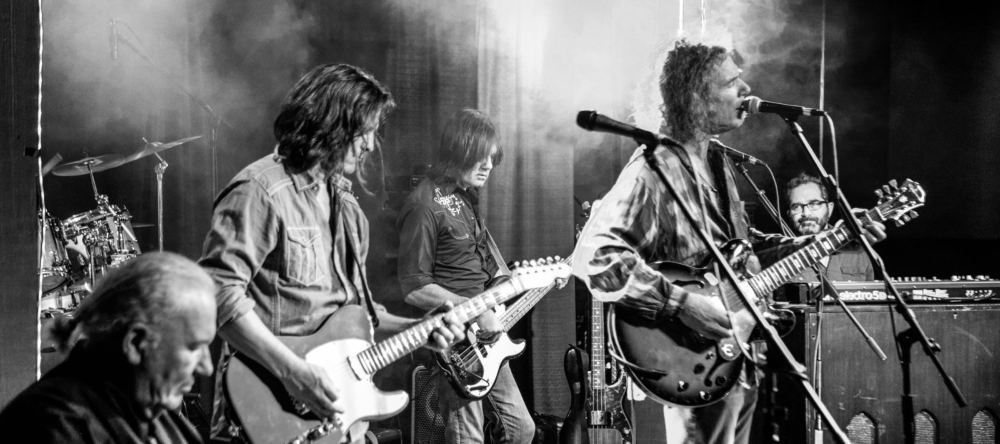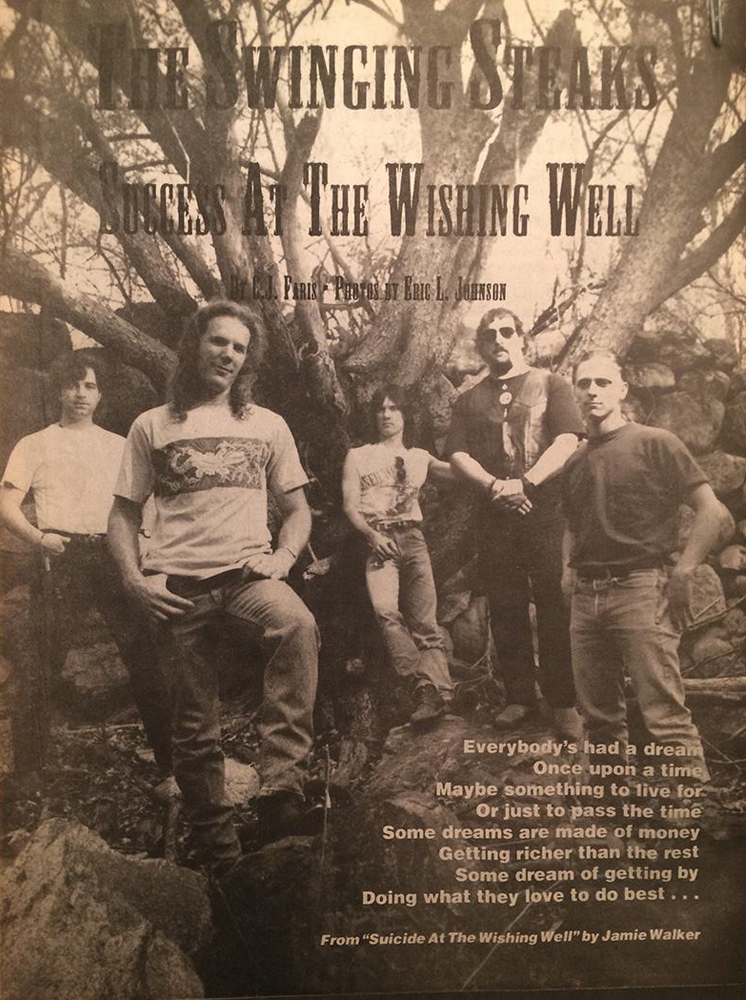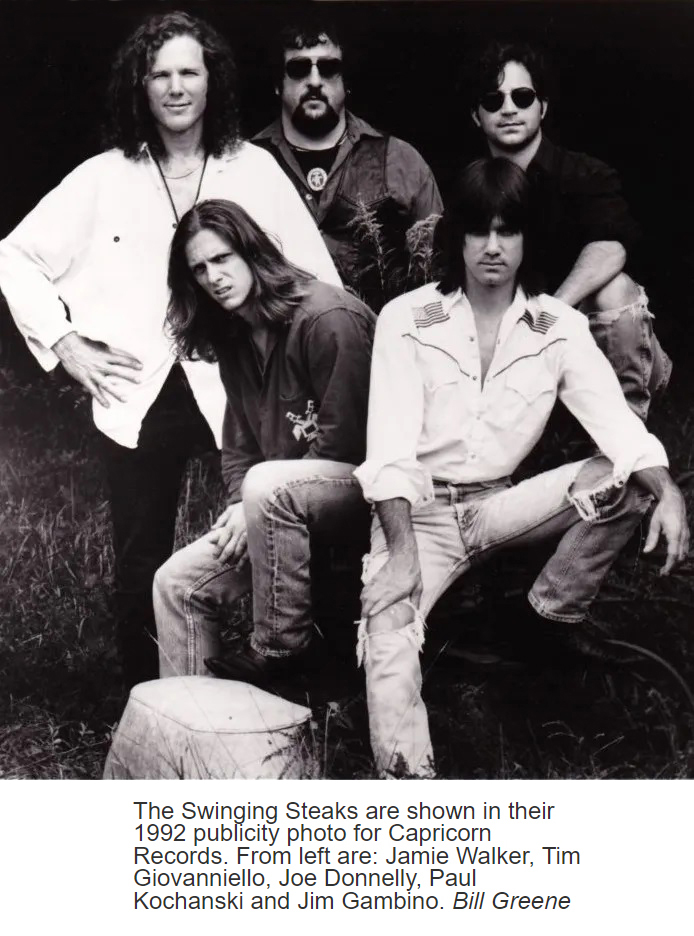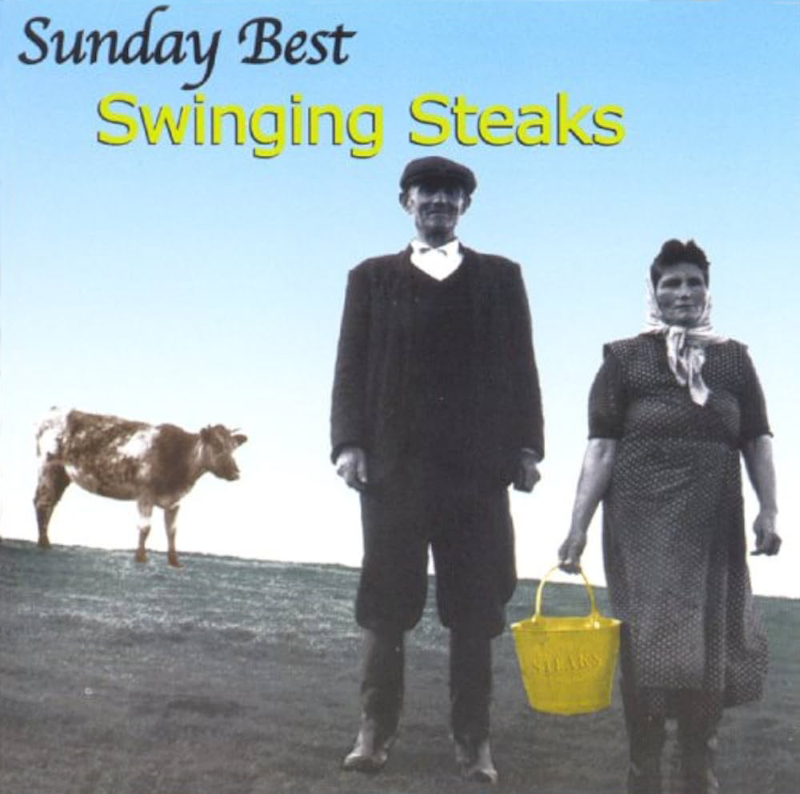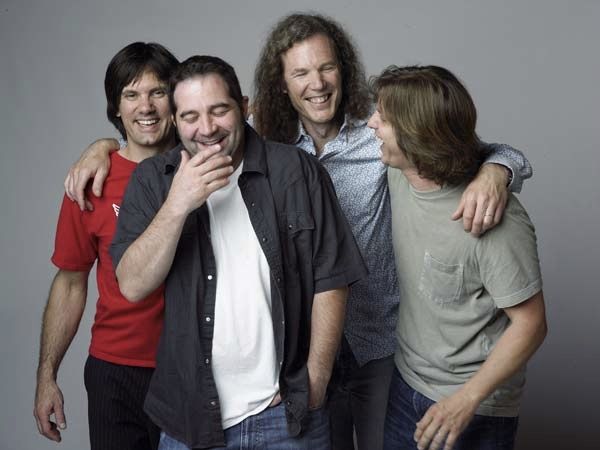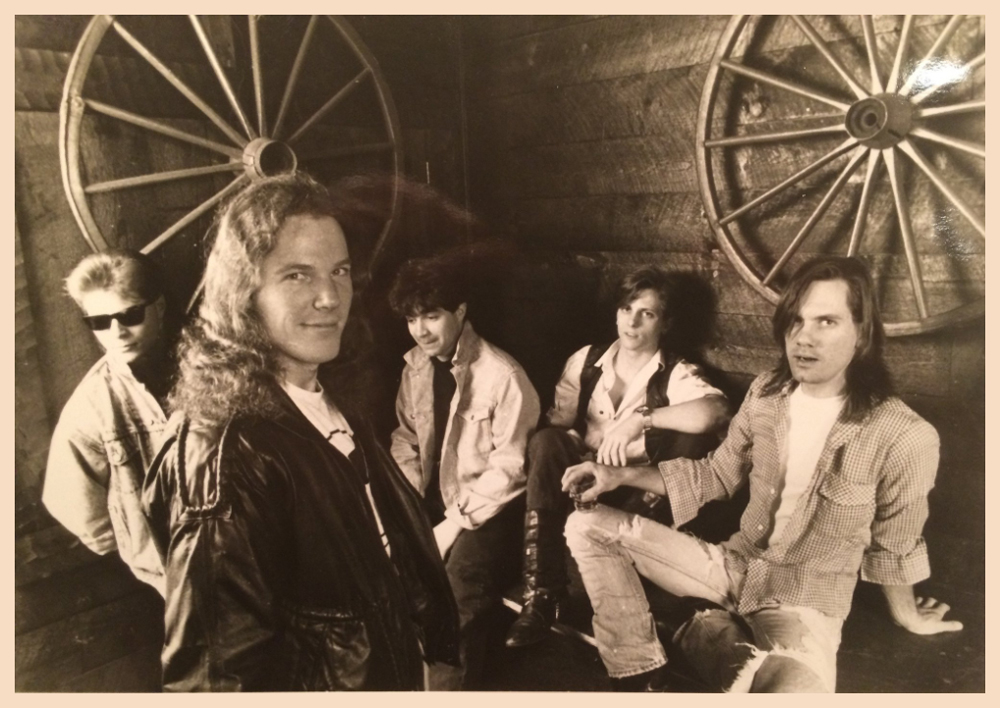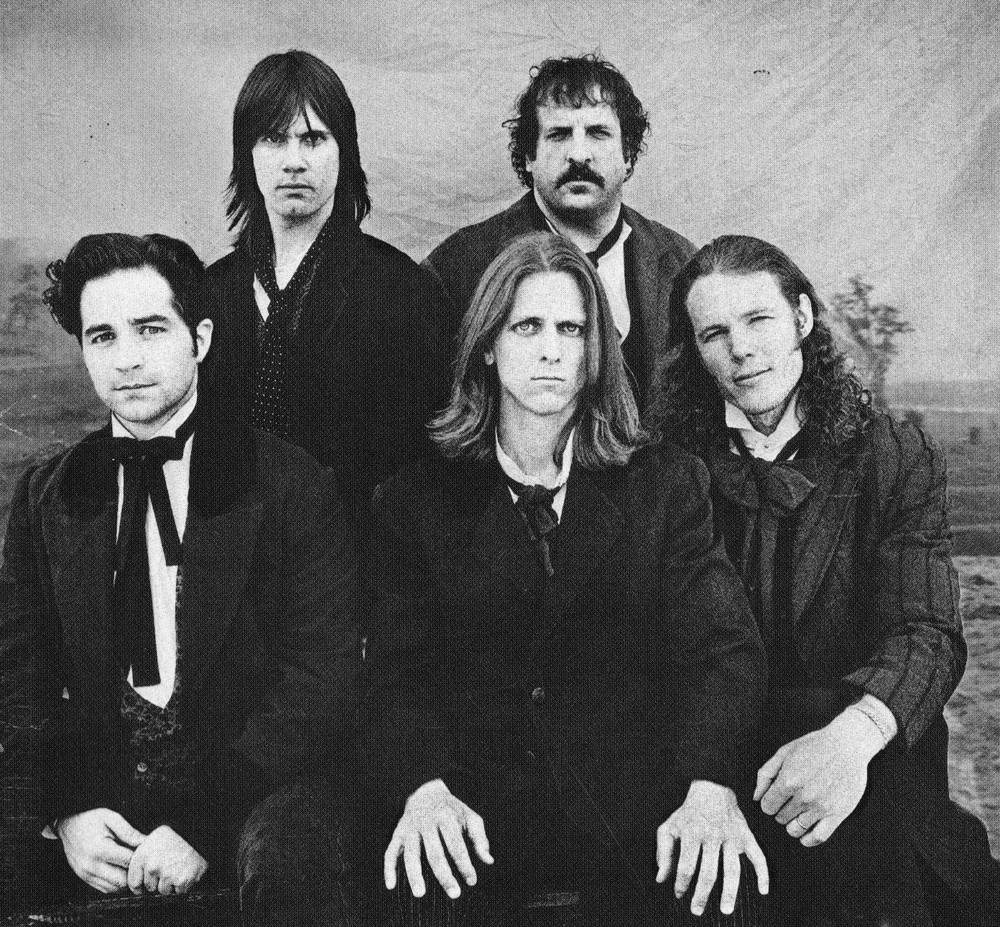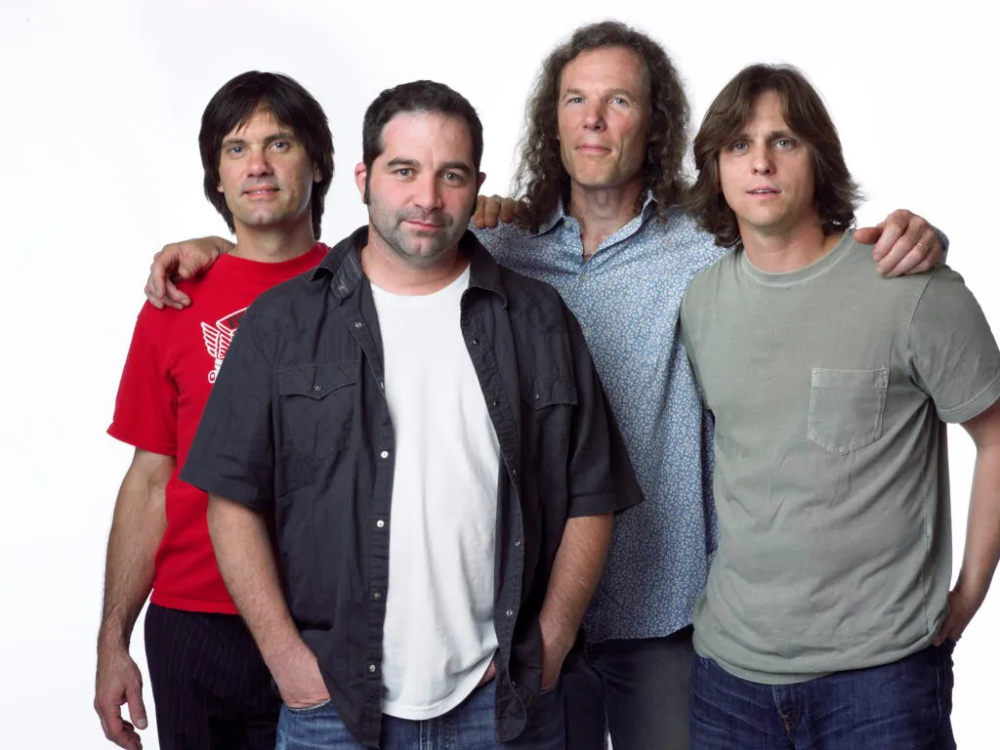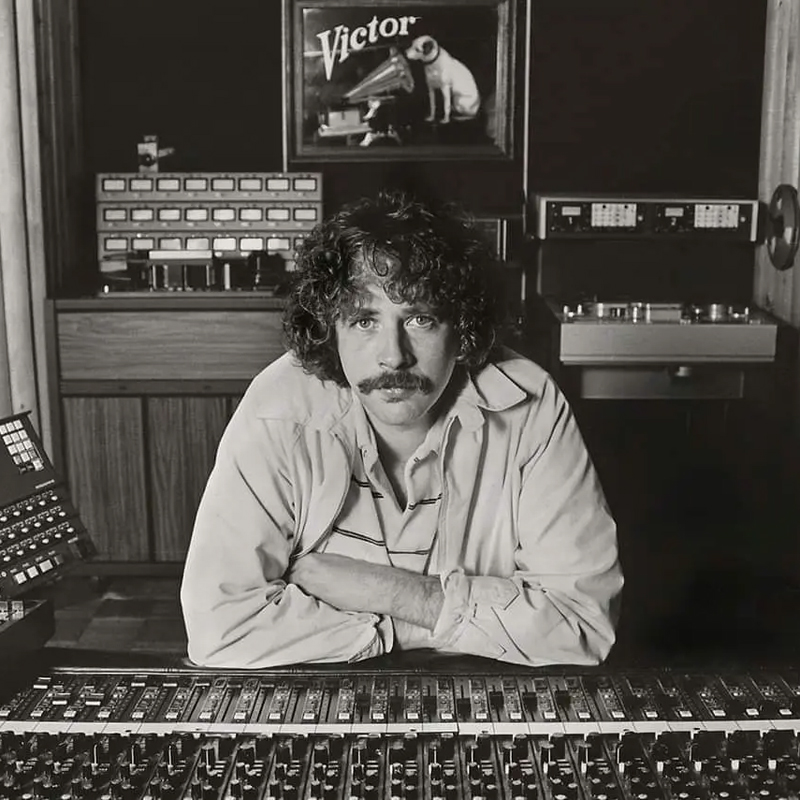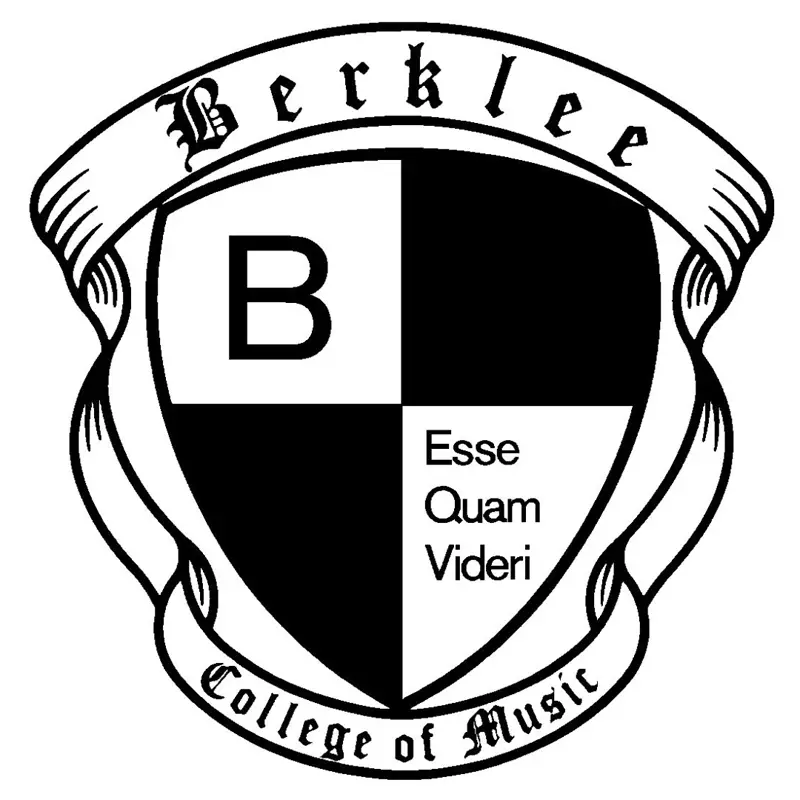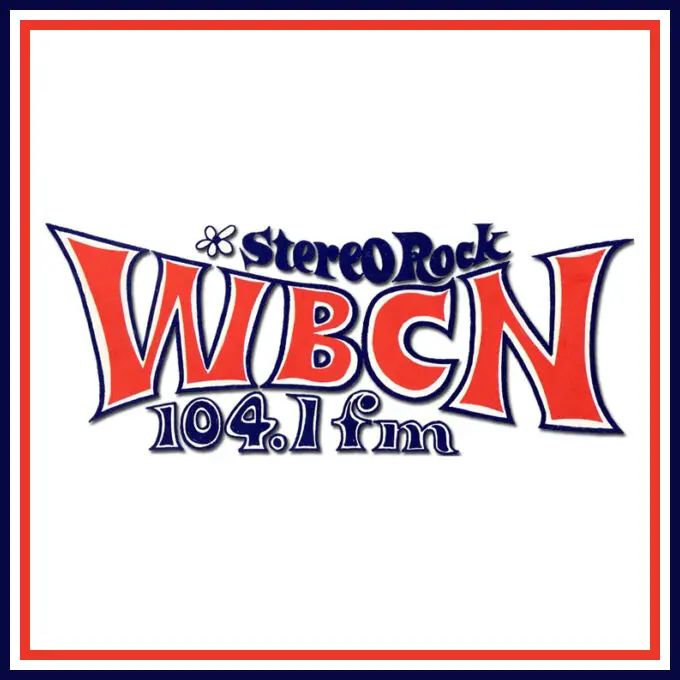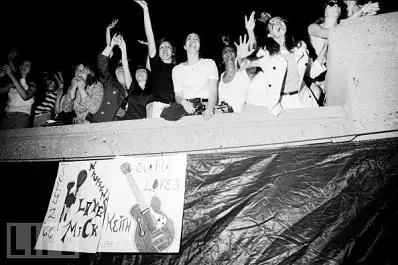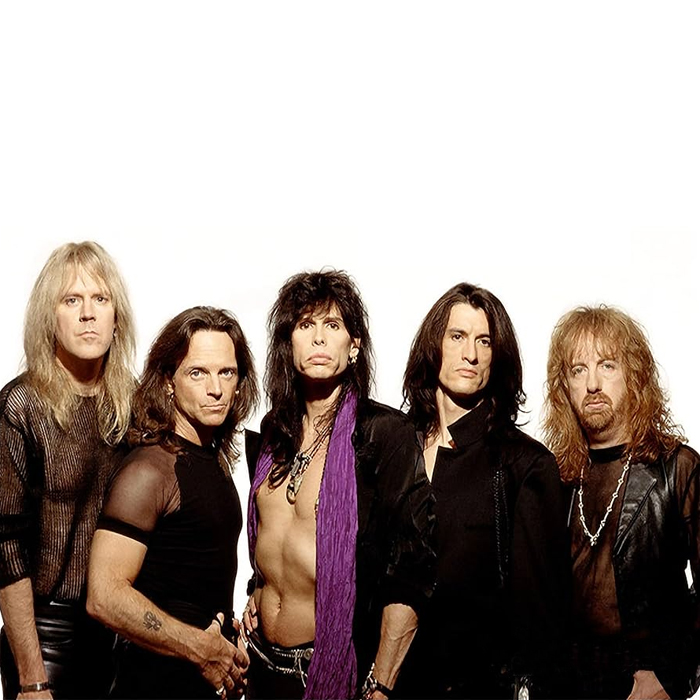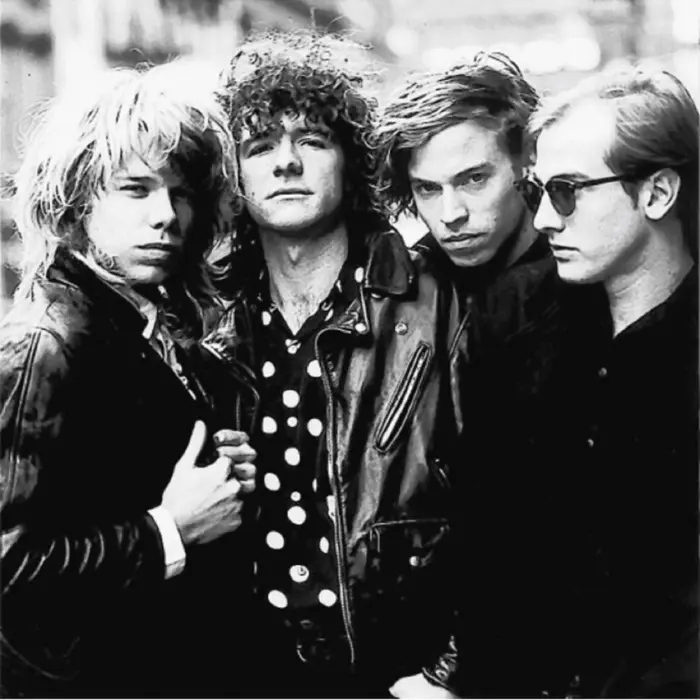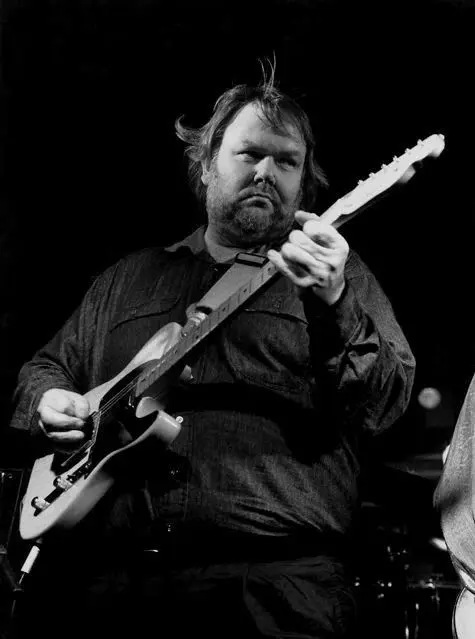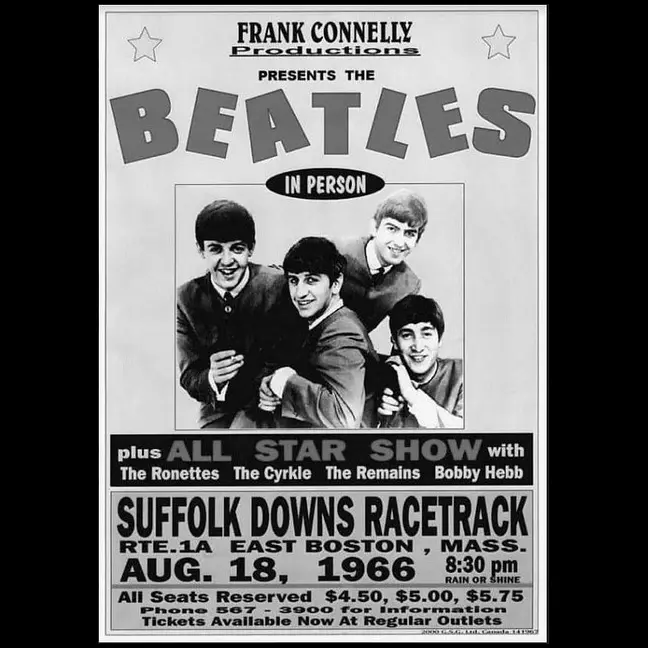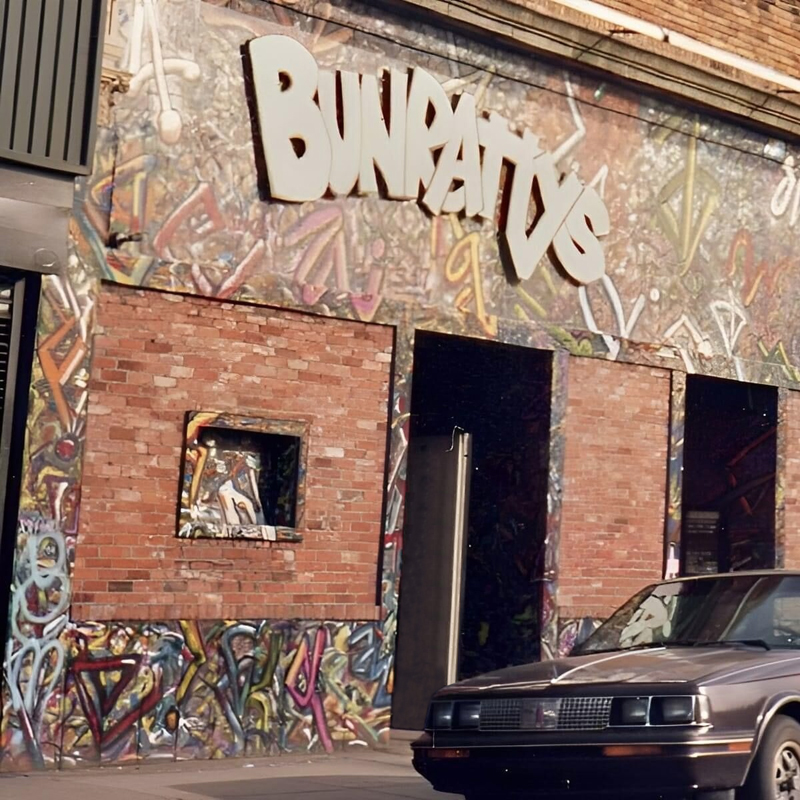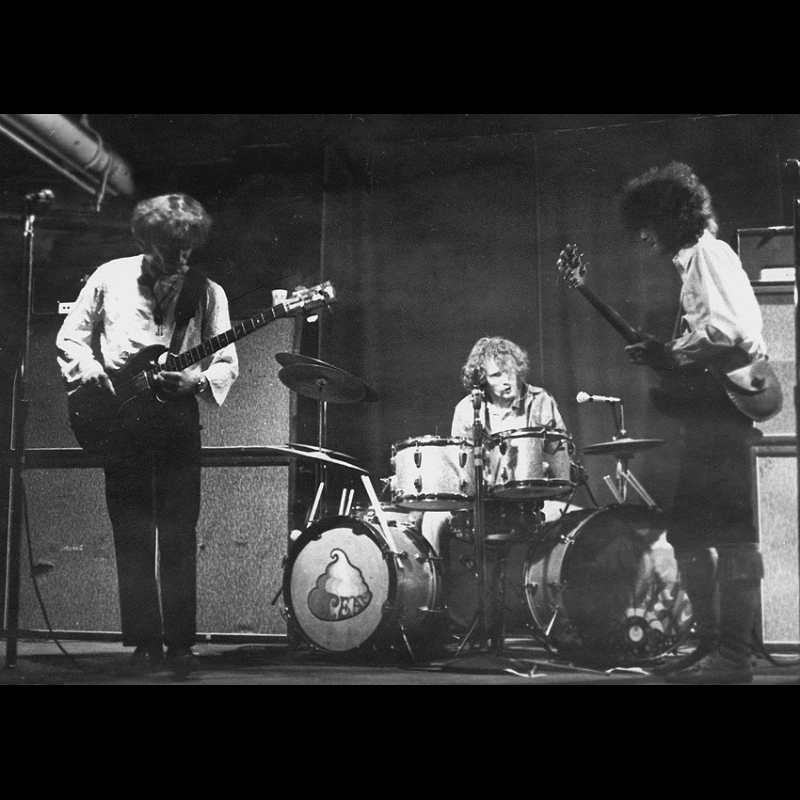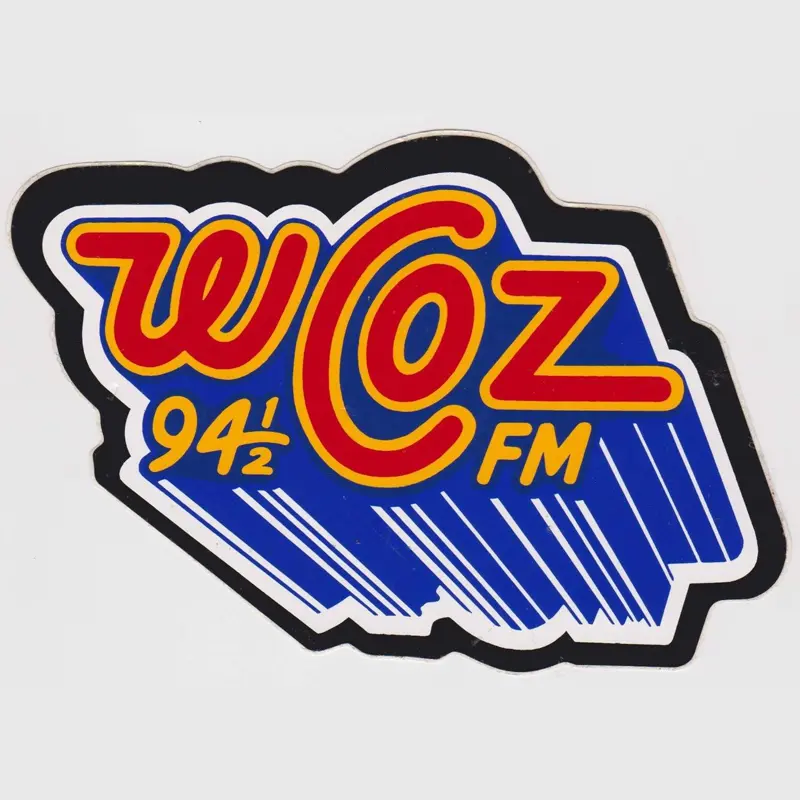The Swinging Steaks
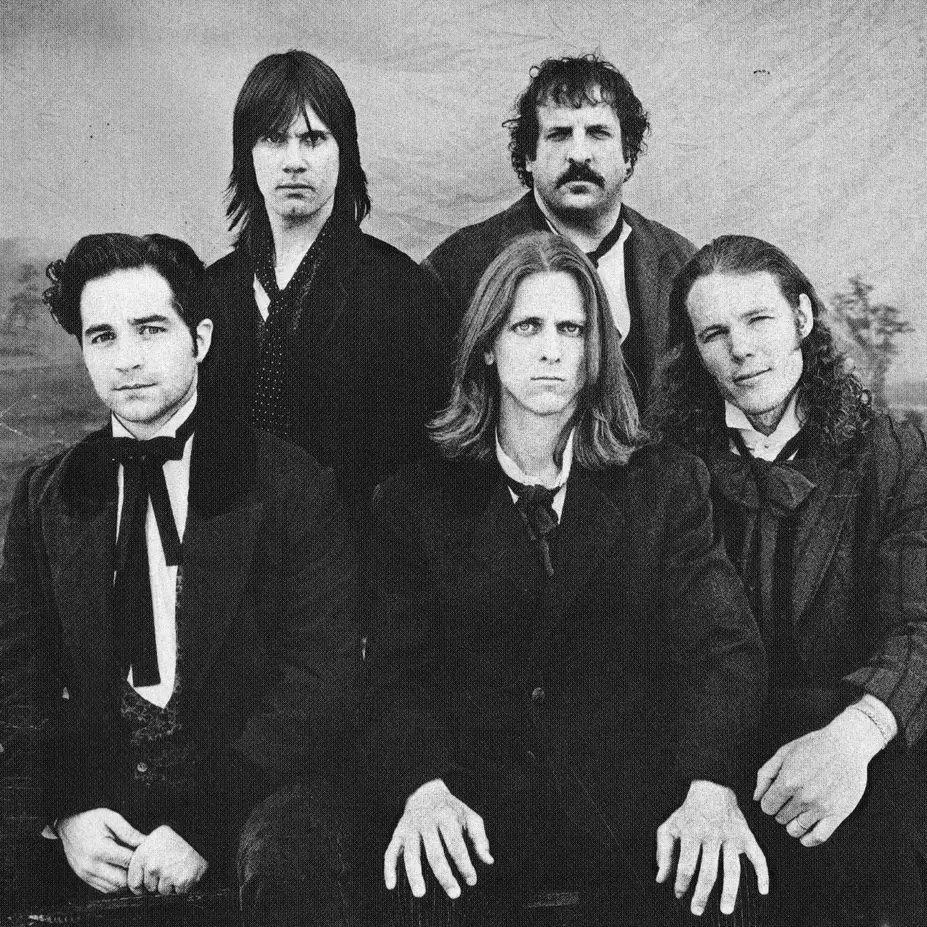
It’s hard to keep a perspective on the Swinging Steaks. These Boston boys have been at it for decades and continue as an unbroken brotherhood, between and around countless other local and national projects. As co-founder and bassist-vocalist Paul Kochanski tells it, “this is my bowling team for life.”
The Swinging Steaks are among the originators of the roots rock/alternative country movement, which became coined as “Americana” in the early 2000s. Creem magazine called them: “the best country-rock out of Boston since Harvard student Gram Parsons put together his International Submarine Band.”
The Steaks were formed in the late 1980s by Jamie Walker and Paul Kochanski, former members of The Drive, with friends Tim Giovaniello and Jim Gambino. After several drummers (Jesse Meyer is credited with suggesting the name), former Del Fuego Joe Donnelly eventually owned the chair. The Swinging Steaks’ second album, Southside of the Sky (1993, Capricorn Records) introduced the band to a national audience with two top ten AAA radio singles and appearances on NBC-TV’s Late Night with Conan O’Brien and NPR’s Mountain Stage. Their four self-released albums, Suicide at the Wishing Well, Shiner, the live, acoustic Bare, and KickSnareHat have continued to expose the group to new audiences and garner them appearances at SXSW, CMJ Music Marathon and Nashville Extravaganza. In 2005 the band released “Sunday Best” on First National Records in the U.S. and Blue Rose in Europe.
These achievements and accolades don’t even begin to tell the story of the Swinging Steaks. Despite my long personal relationship with the Steaks, I interviewed co-founders Jamie Walker and Paul Kochanski in April 2020 to try to put their imprint into perspective.
Jamie is a native New Englander, having grown up in “a middle class family with no worries” with “lots of woods to wander and get lost in.” Jamie’s dad was an artist and had a guitar which became an “object of interest” for Jamie, which he “associated with cowboys.” As time went on, Jamie heard the Beatles on Ed Sullivan and formed his first band in grade school. By the time he got to middle school, the guitar had become his identity. Athletics were highly competitive and Jamie found a comfortable niche for himself as a musician and entertainer, playing songs for the boys on the school bus. His classmates accepted him as cool and Jamie found an identity that defines him to this day.
The 1970s further sealed the deal for Jamie. His uncle moved to San Francisco in 1970 and Jamie visited during that time. He saw “the hippies, the incense, the black light posters and it all felt really good.” Jamie brought that and the musical influences back east – the Stones’ Between the Buttons, Led Zeppelin, the Monkees, Cream’s Disraeli Gears—and began his next chapter in earnest as a ‘counselor in training’ at an arts and music summer camp. The camp director hired local band, Aerosmith with Ray Tabano on 2nd guitar, to headline the camp talent show, and Jamie’s band, Vice Grips, opened. Later, Aerosmith returned to play Jamie’s high school and, between Aerosmith and the Beatles, Jamie caught the rock & roll bug in earnest.
It was then that Jamie formed the Lines, his first “pro” group. The Lines was intended as an original band, but they were ‘managed’ into a high profile cover band. The band was co-helmed by Jamie and they started making waves with support from local radio stations WBCN and WCOZ, along with a billboard in Kenmore Square. The Lines were packing the clubs, opening for the likes of the Ramones and Billy Idol and Jamie learned the power of promotion. They were flirting with the big time.
It was during his time with the Lines that Jamie met Paul Kochanski and Paul became the Lines’ bass player. Paul was attending Berklee College of Music in Boston, having grown up in northern Michigan, where “there was no FM radio… you had to order the records you read about in magazines.” Paul had cut his teeth in the bars, playing bass to Hank Williams songs since he was 14, now exploring the exotic sounds of punk rock and other new music in places like Metro and Bunratty’s.
Jamie and Paul were essentially of the same mind, so when the Lines eventually imploded due to management and musical differences, they left by mutual agreement to start their own original band, the Drive.
The Drive began recording their own material, and, through Paul’s girlfriend at the time, the band made a video that got on MTV’s Basement Tapes. Then Boston’s V-66 music video channel emerged and the Drive enjoyed an early lift from video. The Drive became a good club draw and the band started playing further from Boston. But still no record deal. Finally, at the invitation of a friend, the band went to LA to play showcases with the “hair bands” of the time, Poison, Guns N’ Roses and others, but they had already started to lean country. The other members of the band were dealing with personal issues and things began to wind down.
At this point, Jamie and Paul were sick of chasing the brass ring of commercial success and wanted to play music that made them– and their audience– feel good. This inspired the Swinging Steaks, to which Jamie and Paul recruited Tim Giovaniello and Jim Gambino. Initially imagined to be a band about just having fun, the Steaks recorded the initial tracks for Suicide at the Wishing Well at Downtown Sound in the spring of 1990 with Fletcher, whom they had met at Normandy Sound working for Phil Greene, helming the board and production. Producer Gary Katz, of Steely Dan fame, heard the record being mastered and began to shop the band.
Among the labels that sent A&R scouts up to Boston to hear the band was Capricorn Records. The scout went back and told Capricorn owner Phil Walden to sign the band and the Steaks got their record deal, with Gary signing on as producer. Capricorn used 5 of the original tracks and the band recorded additional tracks at Pachyderm Studios in Cannon Falls, Minnesota with Katz producing. Paul attributes Tim’s presence and development to Gary, who encouraged the band to bring Tim forward as a writer-singer with Jamie. The formula worked and the record, “Southside of the Sky,” was slated for release. Billboard magazine published an article on roots-rock as the future of rock featuring the Steaks with Uncle Tupelo and the Jayhawks. The band started touring with Los Lobos and Jason and the Scorchers behind the record but Capricorn lost its distribution deal and there were no records in the stores as they toured—the substance of the deal was lost but the band was left with an imprint of its own, having played South by Southwest, the Conan O’Brien show, and loads of opening slots for bands like the Black Crowes, John Fogerty, Lynyrd Skynyrd, Hank Jr and others. The Steaks had laid their claim to the foundations of “Americana” with the standard bearers of the times.
Today you can catch the Steaks between other gigs in other places- Tim now lives in North Carolina where he has a successful Eagles tribute band, On the Border. Jim works as a solo performer and band member for many local artists, as does Jamie. Paul continues to work with Lori McKenna, Big Al Anderson, Alastair Moock (with Jamie) and others. And the “Spinal Tap” drum seat that began with Joe Donnelly, now features Andy Plaisted for 20+ years.
Both Jamie and Paul cite the Swinging Steaks as a “brotherhood.” Jamie speaks of the Steaks as his window to life- “it allows you a timelessness,” while Paul describes the band as a “living, breathing entity.” Having been close to the Swinging Steaks since the late ‘90’s, I can attest to the deep sense of brotherhood in the band, and the fact that the Steaks are a Band, and their fans are an extended family of which I am fortunate to have been a part.
Boston is lucky to have these roots rock pioneers in our midst. We are also fortunate that we can still catch them locally from time to time to witness their amazing brotherhood as it continues to evolve.
(by Jon Cate)

